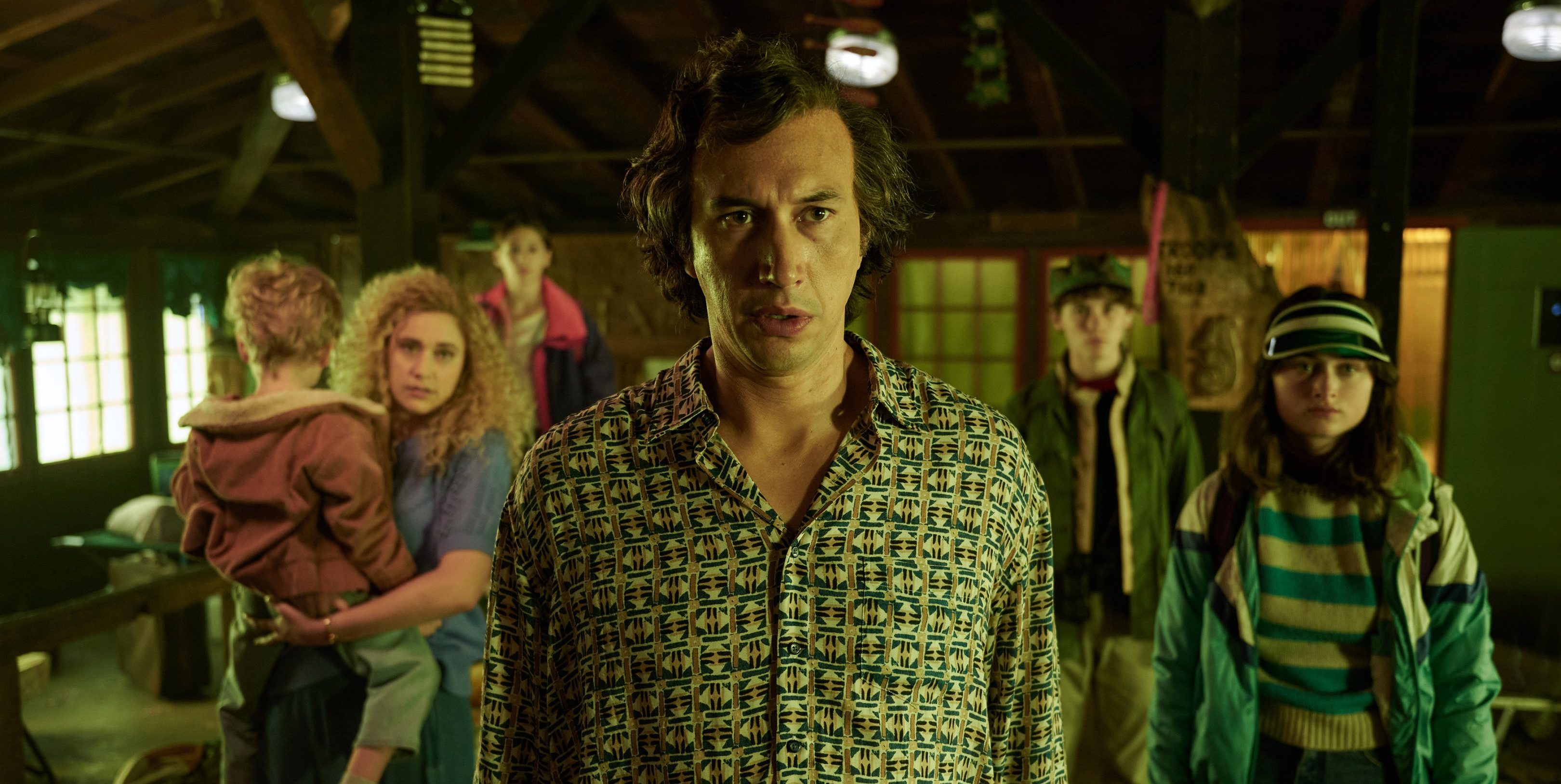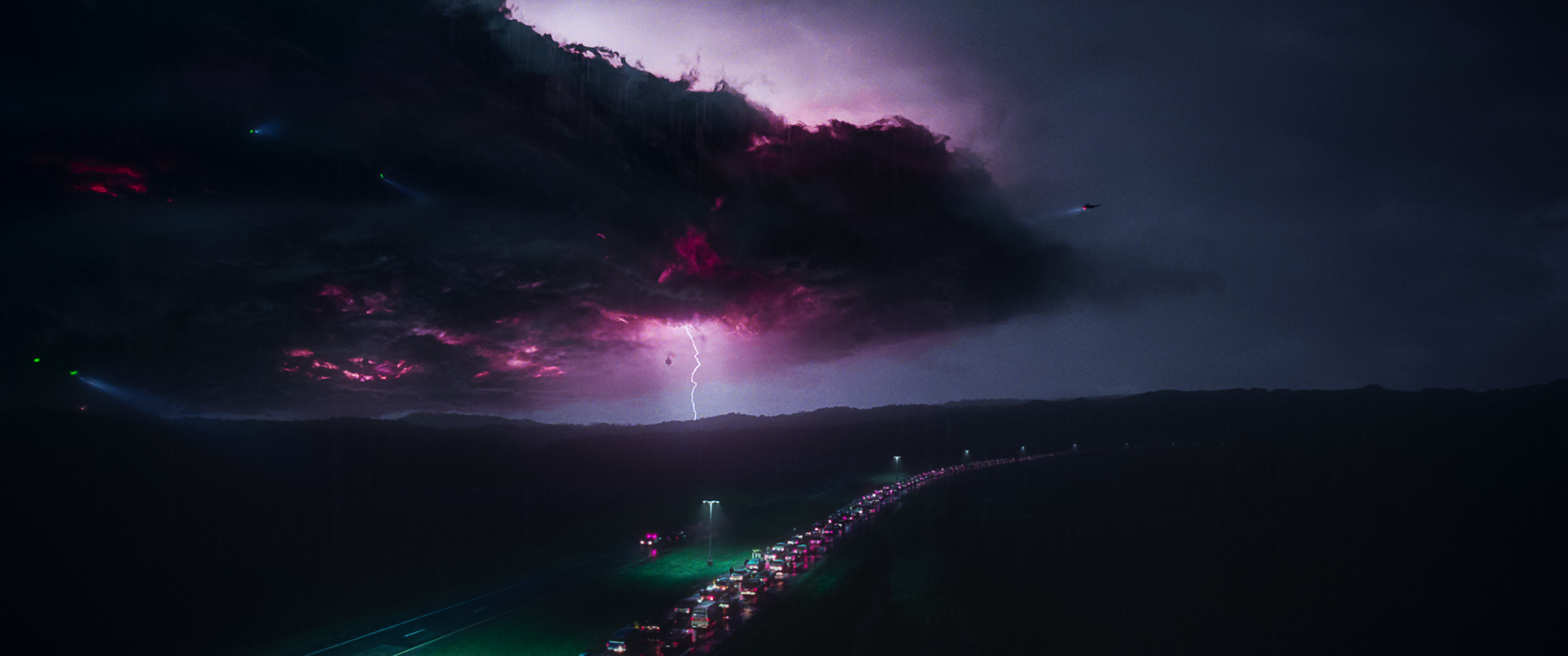Directed by Noah Baumbach, Netflix’s drama film ‘White Noise‘ revolves around the couple Jack and Babette Gladney, who lives a mundane life together as a college professor and posture teacher respectively. Their uneventful existence takes a wild turn when an astounding explosion happens in their town named Blacksmith. After the explosion, a toxic cloud forms in the sky, forcing the residents of the town to evacuate. Jack, Babette, and their children try their best to leave the town but get stuck in the middle of the “airborne toxic event.” But what exactly is the mysterious event? Well, here’s everything you need to know about the same! SPOILERS AHEAD.
Airborne Toxic Event: Meaning and Significance
The “airborne toxic event” is the collective term used to describe the aftermath of the Nyodene D explosion. After the explosion, a toxic cloud forms, leading the town to a frenzy. The environmental hazard soon becomes a spectacle as the radio and other information mediums exaggerate the predicament. Even the Gladneys leave their house upon listening to the news related to the same. As time goes by, misinformation gets added to the predicament, further aggravating the fear of the public. Without any scientific foundation, the media and rumor-mongers take advantage of the occurrence to turn the explosion into an “event.”

Baumbach’s ‘White Noise’ is a film adaptation of Don DeLillo’s eponymous novel. The author conceived the particular storyline of the “airborne toxic event” as a critique of the way tragedies or hazards are approached by media. In the novel and film, radio and other means of information control the explosion and its aftermath. Without any ethical commitment to the public, they try to sensationalize the predicament for their own good. Through the exploration of the “event,” DeLillo succeeded in calling out the sensationalism and unethical practices of the media of the 1980s and depicting the consequences of the same.
In DeLillo’s novel, the radio channels spread the rumor that the individuals who are exposed to the toxic cloud would experience episodes of déjà vu, only for a group of individuals to testify to the same. The same channels later announce a correction that déjà vu isn’t a symptom, indicating how radio and other information mediums influence the public’s mind and reaction towards particular tragedies. Through the example of the supposed symptom, DeLillo showcases how ultimately any tragedy can be controlled by the mediums which control information. Considering the recent examples of misinformation during the time of the Covid-19 pandemic, DeLillo’s novel can be considered prophetic.
The most significant element of the airborne toxic event is the toxic black cloud. Since the explosion, the cloud grows in size, increasing the fear among the residents of Blacksmith. The looming cloud can be the physical representation of the fear of death that unsettles the public, which includes Jack, Babette, and their children. Although the Gladneys try to escape from the exposure of the cloud, they fail to do so, depicting the inevitability of death. Jack’s fear of death also grows after his exposure to the cloud, which can be seen as his confrontation with the harsh reality of death.

Both DeLillo and Baumbach conceived their versions of ‘White Noise’ as allegories of death. In the novel and film, the Gladneys’ peers consider death as a fictional spectacle that only happens in the entertainment mediums. Through the airborne toxic event, the author and filmmaker succeeded in depicting the inescapability of death. “It [‘White Noise’] is telling this story of how, in our attempts not to deal with our own mortality, to really acknowledge death in a serious way in our culture, we somehow sublimated death into our entertainment,” Baumbach told Indie Wire about how the film explores mortality, apparently through the event.
As far as the townsfolk of Blacksmith is concerned, anything that threatens life is fiction. In the opening scene of the film, Professor Siskind screens footage of car crashes as a work of entertainment to make his students believe that death and tragedies are more or less fiction. The Nyodene D explosion and the subsequent airborne toxic event are the occurrences that force the residents of the town to confront the harshness of the reality they live in. Due to the event, the townsfolk realize that tragedies aren’t imaginary occurrences that exist only in entertainment. Ironically, it doesn’t take long for the entertainment mediums to make the explosion and event another spectacle.
The airborne toxic event is the true reflection of entertainment in the 1980s, showcasing how reality was altered in the period by radio, television, and other means of information. DeLillo’s prophetic vision makes the event relatable even in contemporary times as the world deals with real hazards which are showcased by the media as spectacles.
Read More: Why Are People Dancing at the End of White Noise, Explained


You must be logged in to post a comment.